The Atlas Moth (Attacus atlas) is indeed one of the largest species of moths in the world. In fact, it is considered to be the second largest species of any species of butterfly or moth (Lepidoptera) in terms of wingspan. Although these animals do vary in size a lot, they can attain wingspans up to 250mm (25cm). One of the record-holding specimens, collected in 1922 in Java, was a female with a wingspan of 262mm (26cm). [Source: The University of Florida Book of Insect Records, Chapter 32, Largest Lepidoptera wingspan]. The only species of moth with a larger wingspan is the White Witch Moth, Thysania agrippina – with a world record of about 310mm (31cm).

This insect has a large range distribution in tropical Asia; it’s found in Nepal, Bangladesh, India, Bhutan, Burma, Thailand, Cambodia, Vietnam, Laos, a small part of the Phillippines (only the Babuyan Islands and the Batanes Island Group), Indonesia (Java , Bali & Sumatra), Japan (only Ryukyu islands and Okinawa), and Taiwan where it has a tiny subspecies, Attacus atlas formosanus with a smaller wingspan.
Their sheer large size, combined with the fact that they are not-so-difficult to breed in captivity with basic experience, makes them a populair species in the pet trade. Cocoons of atlas moths are commercially farmed in butterfly farms and exported around the globe. Do not be suprised to see them in zoos, or butterfly exihibits!

The atlas moth is very much considered to be a forest species. It lives in warm, tropical to subtropical forests, where it seems to use a wide variety of host plants to complete its life cycle. Notably they love Santhol (Sandoricum koetjape), several species of tree-of-heaven (genus Ailanthus), Camphor (Cinnamomum camphora) and Nephelium. Interestingly they can also use many introduced plants such as soursop (Annona sp.), avocado (Persea americana) despite the fact that these plants are native to the tropical Americas. In reality, the species seems to be able to use hundreds(!) of host plants; and it is perhaps this plasticity when it comes to host plant utility that makes them widespread and able to survive in many different countries. In captivity, it is easily reared on privet (Ligustrum), sweetgum (Liquidambar), several types of cherry (Prunus), and more.

The trick to rearing them is to keep larvae well-ventilated; they prefer a lot of airflow. They prefer moderate humidity and temperatures. When it comes to temperatures, they don’t seem to be very picky; they’ve been reared in cooler (18C) and warmer (27C+) conditions without much trouble. They do seem to be more picky in regards the humidity and airflow. Too high humidity and ‘stale’ air, somehow seems to be make them sick rather quickly. The larvae are coated in a white, waxy powder that they constantly appear to secrete. Presumably, this powder makes them water-repellent, and perhaps also protects them from external parasites and pathogens to a degree.
Their status as one of the ‘biggest moths’ is often subject to debate; that’s because size is hard to quantify if things like weight, and wing surface area are taken into account. In terms of wingspan, it is definitely the second-largest species. Other contenders are the hercules moth (Coscinocera hercules) that have a heavier body weight than the atlas moth, especially the females, although their wingspan is significantly smaller (closer to 210mm) than atlas moths, and Attacus caesar, another large species (wingspans can exceed 255mm), that approaches the size of Attacus atlas. Wing surface area is also mentioned sometimes, but it appears that little data exists on Lepidoptera wing surface area and a lot is just speculation; but if we measured wing surface area, the likely winners would be the females of any Attacus and Coscinocera species. However, when it comes to flying insects, size has always been quantified in terms of wingspan – the rest just depends on semantics. In that case, the winner is 1. Thysania agrippina (310mm+), 2. Attacus atlas (262mm+), 3. Attacus caesar (255mm), and 5. Ornithoptera alexandrae (250mm+).
- Difficulty rating: Average – Not the easiest but not hard.
- Rearing difficulty: 6.5/10 (From egg to pupa)
- Pairing difficulty: 6/10 (Archieving copulations)
- Host plants: Very numerous! Santhol (Sandoricum koetjape), several species of tree-of-heaven (genus Ailanthus), Camphor (Cinnamomum camphora) and more. In captivity, non native food plants like privet (Ligustrum), cherry (Prunus), sweetgum (Liquidambar) and more are often accepted.
- Natural range: Nepal, Bangladesh, India, Bhutan, Burma, Thailand, Cambodia, Vietnam, Laos, a small part of the Phillippines (only the Babuyan Islands and the Batanes Island Group), Indonesia (Java , Bali & Sumatra), Japan (only Ryukyu islands and Okinawa), and Taiwan where it has a tiny subspecies, Attacus atlas formosanus with a smaller wingspan.
- Polyphagous: yes
- Generations:
- Family: Saturniidae (silkmoths)
- Pupation: Cocoon (silk encasing)
- Prefered climate: Tropical (prefers warm and humid)
- Special notes:
- Wingspan:
- Binomial name: Attacus atlas (Linnaeus, 1758)
- Health warning: No
The tips of the forewings are decorated with that seems like the head of a snake, which probably wards off potential predators. Also remarkable are the small transparent patches on the wings which resemble windows (for this reason they are called “fenestra” – latin for window). These transparent frames are theorised to break up the moths shadow by letting light through, as such a large moth tends to cast a very recognizable silhoutte. They can be found on many Saturniidae of the Attacini tribe however.
Also very curious are the large caterpillars that are covered with a white and waxy powder. In their final instars they can consume large quantities of host plant. The waxy powder probably helps them become water-repellent.
Atlas moth caterpillars are able to feed on a wide variety of plants, including Ligustrum sp.(privet), Prunus sp.(Cherries), Malus sp. (Apple), Ailanthus sp.(tree of heaven), Salix sp.(Willows), Citrus sp.(Citrus), Syringa (Lilac), and much more than I am able to to mention, so experimenting may be worthwhile.
The hatchlings of Attacus atlas should be reared in closed plastic boxes with a little bit of ventilation up until the third instar. From the third instar and beyond, they require more ventilation and space (or they will get sick) and have to be caged or sleeved. Do not overcrowd them.
After feeding for a couple of months and reaching their final instar, the larva will wander to find a suitable spot to spin its cocoon. The cocoons are notably sturdy and brown. When emerging, the moth dissolves part of the silk casing by secreting an enzyme that burns a hole into the cocoon. In captivity however, I remove the pupae from the cocoons for optimal emergence. The wine-red pupa can stay dormant in diapause for quite a while, and it may take a few months up to over a year for them to emerge in some (extreme) cases. They have a facultative light-controlled diapause. Before emergence the pupae turn a darker colour.
These images include a stock of cocoons I purchased to try and breed, and a typical pupa ready to emerge. These moths emerge quite sporadically, which adds a significant luck factor to getting both a male and a female out to pair them, for the moths are short-lived. Pairing may be archieved naturally or via handpairing. A female moth will lay her eggs in random places, even on furniture and walls. They aren’t picky. Females will lay between 50 and 150 eggs (rough estimate). Bigger and fatter females produce more eggs.
Males and females can be distinguished quite easily by the antennas, for the males antennas are much larger and thicker than that of the female. Males are generally much smaller and more slender. They also show different behaviour.
Females are quite passive and prefer sit still, waiting for the males while spreading pheromones (“calling”). Males are much more active for they are the ones that are supposed to locate the female, and they can detect her pheromones from large distances (several kilometres according to some sources!)
These moths are quite easy in captivity if provided enough space and the right host plant, and patience. Caterpillars can be reared in boxes or open on potted plant, in a medium to low density. It is recommended to keep them above room temperature (22-20 celcius is optimal) and a bit humid. I think Ligustrum sp. and Prunus laurocerasus are the best plants to rear them on.
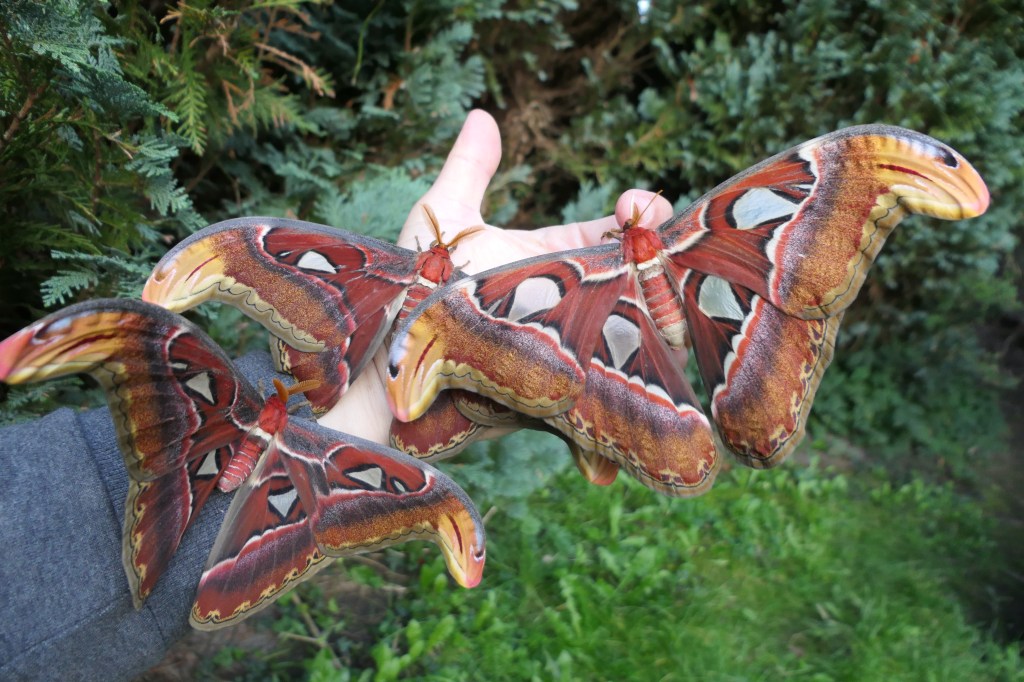

 Females are quite large and well-rounded. They often have wingspans larger than 24 centimetres. They have fat bodies and large wings.
Females are quite large and well-rounded. They often have wingspans larger than 24 centimetres. They have fat bodies and large wings.
For archieving natural pairings, the best would be to place them in a dark, well-ventilated room with natural light (artificial light can disturb their biorythm. Do not handle the moths too much before the night you need them to pair. They are also VERY easy to handpair (one of the easiest). A handpairing tutorial is added to the bottom of this page.
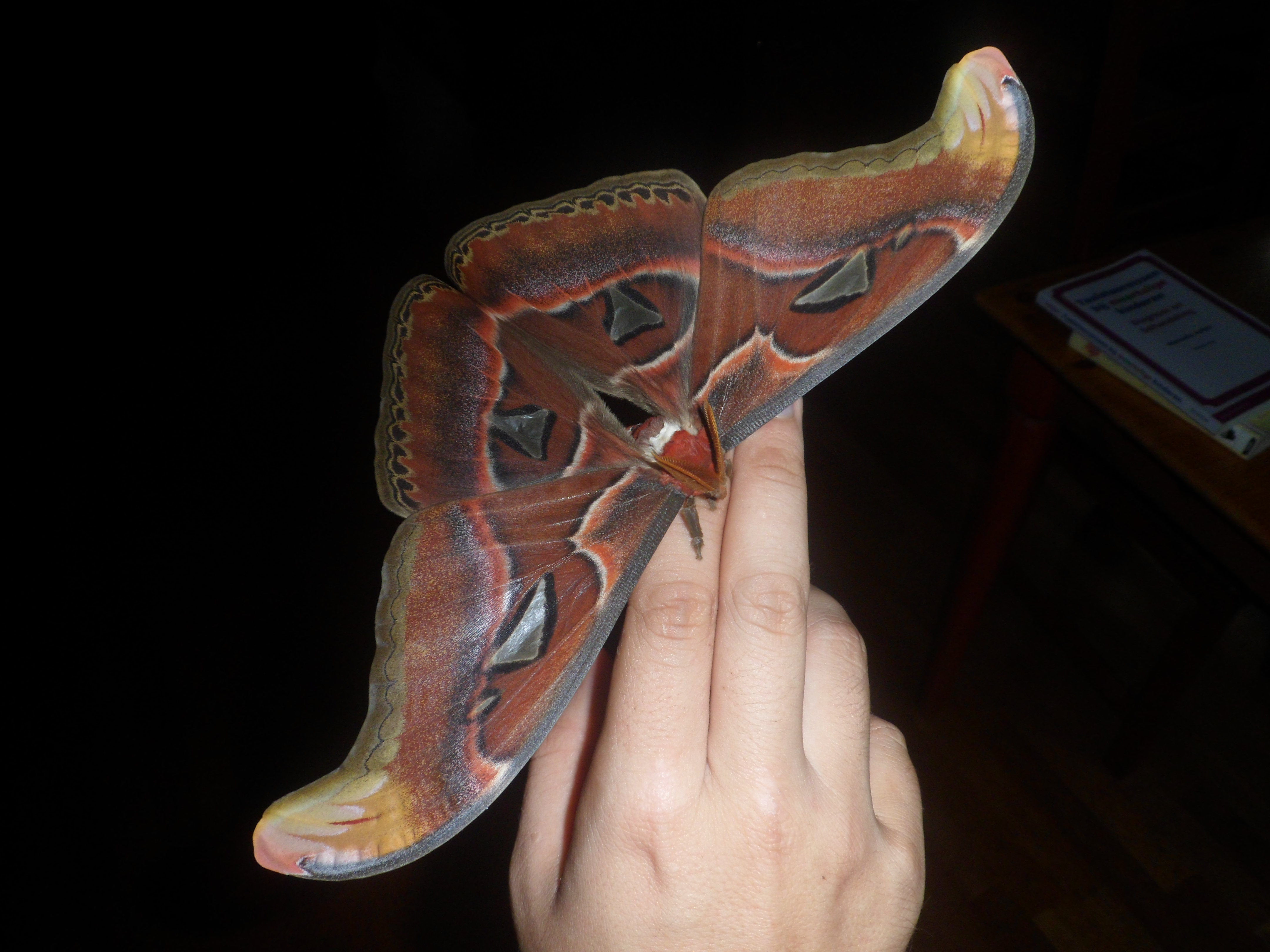 Males are much more slender – with thinner elongated wings. They are smaller insects with a smaller wingspan and they have thick feathered antennae.
Males are much more slender – with thinner elongated wings. They are smaller insects with a smaller wingspan and they have thick feathered antennae.
All in all, they are admirable and impressive moths. With a bit of patience and care they are worth the effort!
Here is a video showing how to handpair them:
Thank you for reading my article. This is the end of this page. Below you will find some useful links to help you navigate my website better or help you find more information that you need about moths and butterflies.
Dear reader – thank you very much for visiting! Your readership is much appreciated. Are you perhaps…. (see below)
- Not done browsing yet? Then click here to return to the homepage (HOMEPAGE)
- Looking for a specific species? Then click here to see the full species list (FULL SPECIES LIST)
- Looking for general (breeding)guides and information? Then click here to see the general information (GENERAL INFORMATION)
- Interested in a certain family? Then click here to see all featured Lepidoptera families (FAMILIES)
Citations: Coppens, B. (2019); Written by Bart Coppens; based on a real life breeding experience [for citations in literature and publications]
Was this information helpful to you? Then please consider contributing here (more information) to keep this information free and support the future of this website. This website is completely free to use, and crowdfunded. Contributions can be made via paypal, patreon, and several other ways.
All the funds I raise online will be invested in the website; in the form of new caresheets, but also rewriting and updating the old caresheets (some are scheduled to be rewritten), my educational websites, Youtube, breeding projects, the study of moths andconservation programs.
Donate button (Liberapay; credit card and VISA accepted)
Donate button (PayPal)![]()
Become a member of my Patreon (Patreon)![]()
Find me on YouTube
Find me on Instagram![]()
Join the Discord server: Click here
Join the Whatsapp server: Click here
Buy insect cocoons: Click here
Facebook: Click here

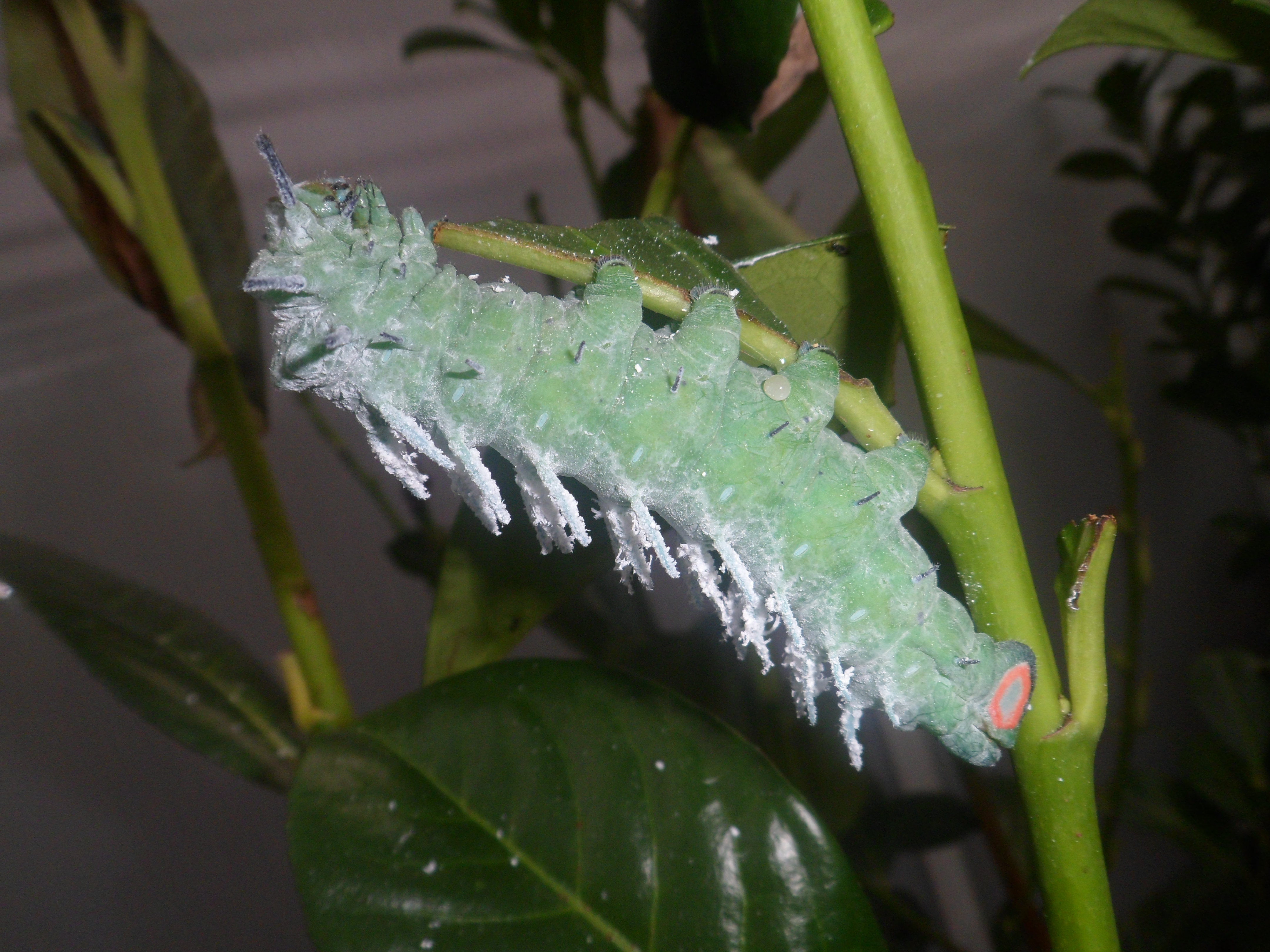
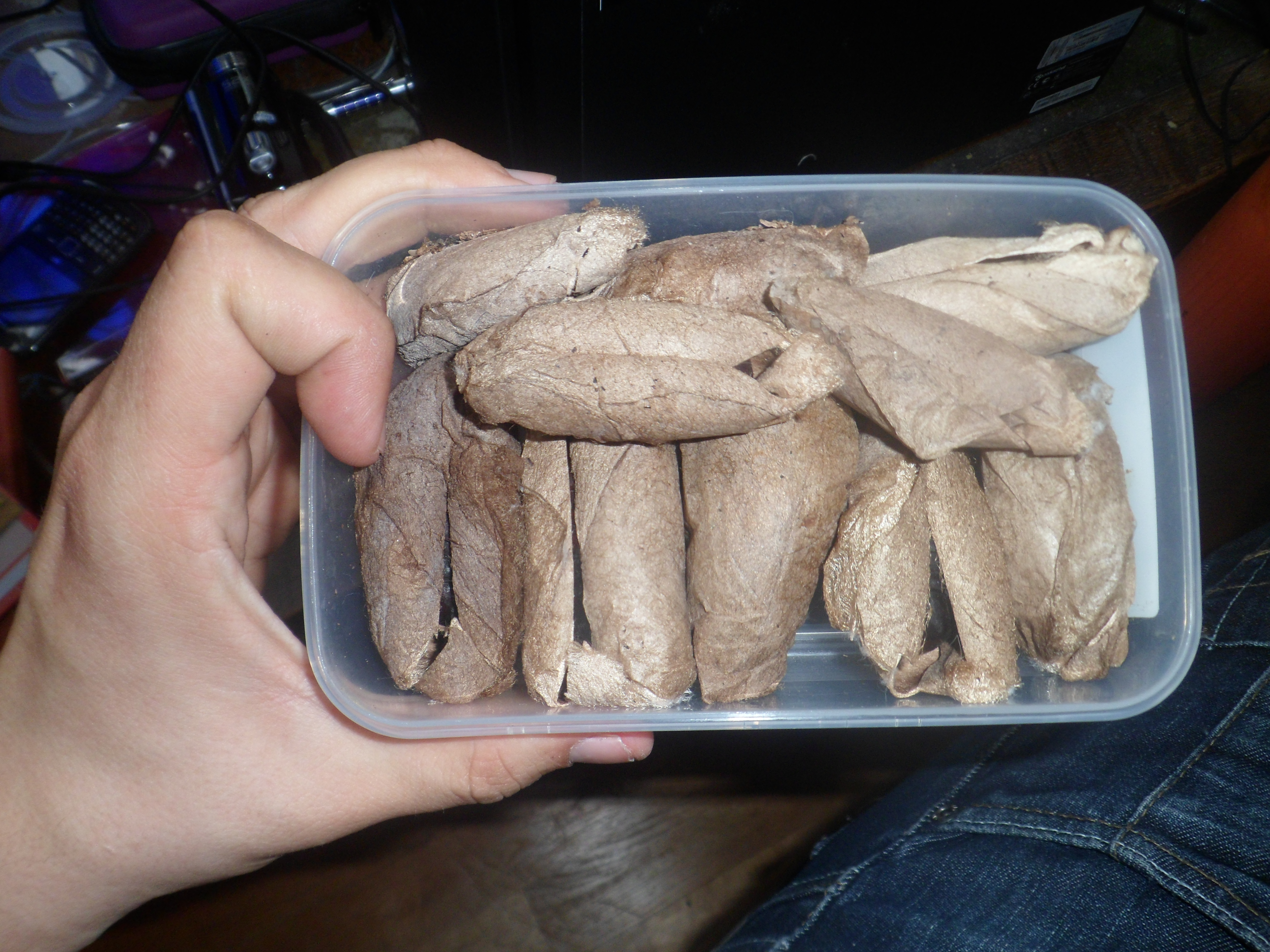
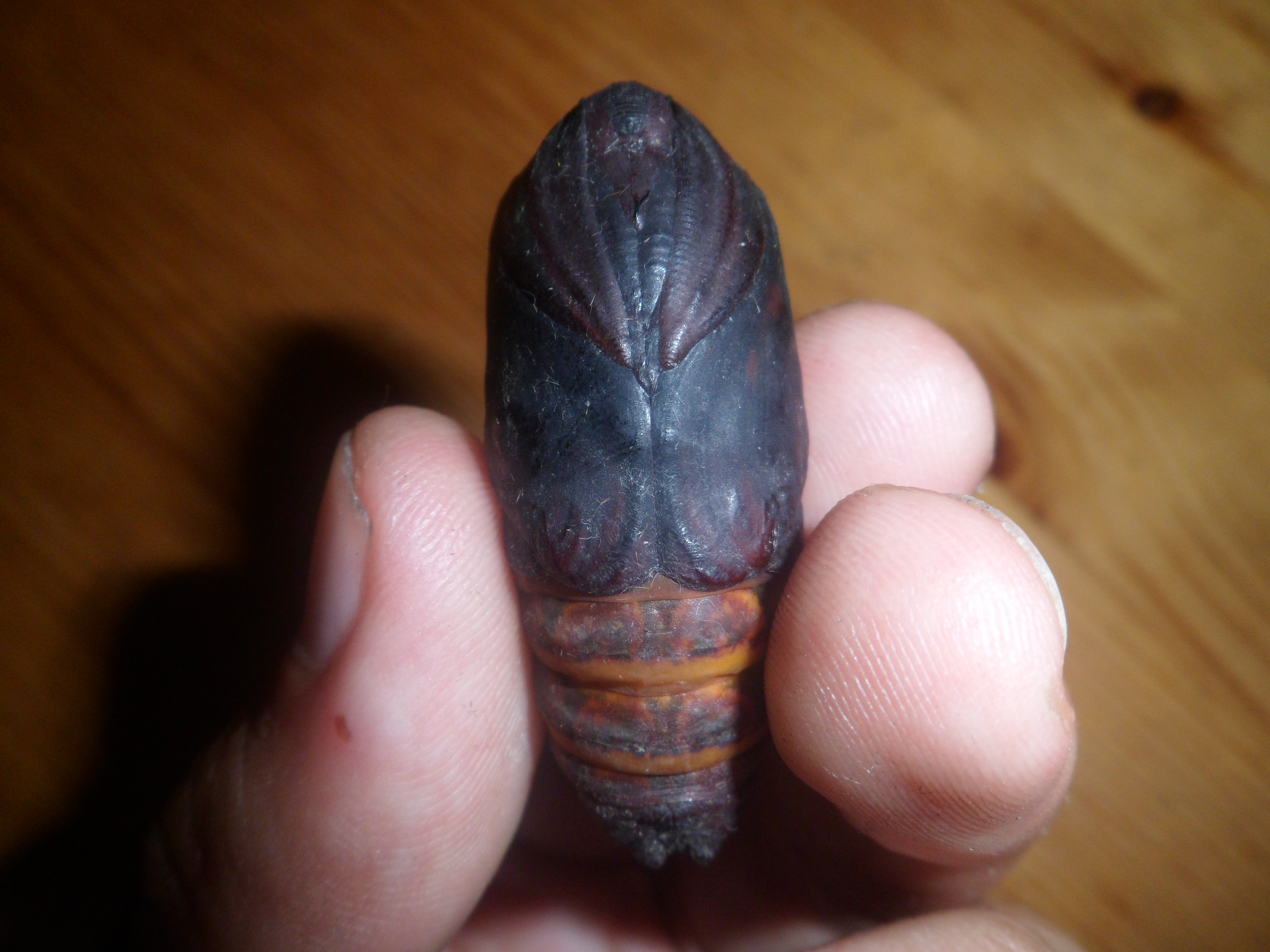
The cocoons are so though that they are almost untearable ! Believe me its easier to tear a piece of paper than the cocoon of the Atlas moth !
LikeLike
Extremely large lepidopterans are usually rare. The Queen Alexandra’s birdwing ( Ornithoptera alexandrae) and the Owlet moth ( Thysannia agrippina) are just examples. The Atlas moth is an exception.
LikeLike
Where can I buy?
LikeLike